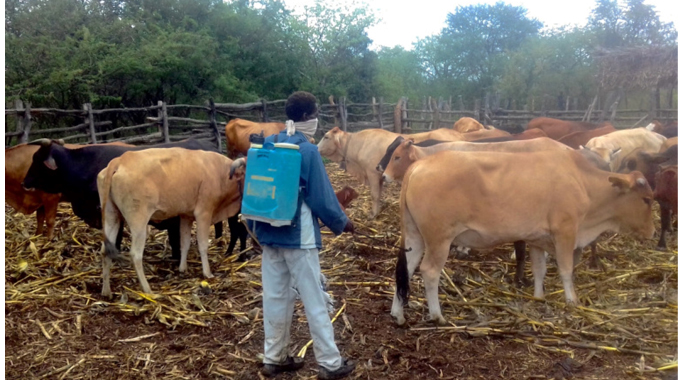
The Sunday News

THERE is nothing that gets a livestock farmer mad or even depressed like the death of his/her animals. This is the time that relationships between stockmen and employers get bruised and strained.
Mortality in your herd has a direct relationship with your loss index. There is a well-established cause effect relationship or corelation between mortality in your herd and the loss incurred by the enterprise.
While there are a number of factors that contribute to an enterprise recording a loss, mortality in livestock production is one major factor and it has to be managed for both the sanity of the owner and the health of the enterprise.
In livestock production there are many causes of mortality depending on the age of the animal as well as the geographical location of the farm. In some areas mortality can be a result of predation, obviously this is very pronounced in areas bordering wildlife habitats.
It can also be due to starvation, where animals deteriorate in condition until they are done due to unavailability of feed.
This is called poverty deaths in livestock production jargon. In other localities livestock farmers record substantial mortalities due to poaching activities specifically snaring. Poachers set up snares in grazing areas, mostly with the intention of trapping plains game such as impalas and kudus but because the snares are by their nature non-selective, they also catch livestock grazing in those areas.
Mortality can also be a result of diseases where animals fall ill as a result of one disease or another and die if not intervention is timely rendered. The important aspect therefore for the livestock farmer is to manage one’s animals in ways that seek to keep mortality at bare minimum as much as possible.

The important aspect therefore for the livestock farmer is to manage one’s animals in ways that seek to keep mortality at bare minimum as much as possible.
Some of these stockmen we use come from family backgrounds where loss of a calf was just one of those things, a sick animal would rather be finished off to provide relish than go the extra mile of treating. As such the guy might not be wired to view mortality with the same level of gravity as you are.
You need to configure and recalibrate his settings such that when there is a potential mortality causing situation such as animal disease, his reaction is swift, decisive and primarily primed up for saving the animal’s life.
The second important aspect in managing herd or flock mortality, is adopting a disease prevention as opposed to treatment strategy.
As a livestock farmer it is important to follow strict animal health routine management practices that help prevent diseases in your animals. Practices such as vaccination, dipping and dosing are essential in keeping your animals safe from diseases. Livestock farmers should make it a habit to follow animal management calendars like the vaccination calendar which will indicate when to vaccinate against what diseases.
Regular dipping cannot be over-emphasised among livestock farmers as tickborne disease contribute to over 70 percent of livestock diseases on the national herd.
Dosing will keep your animals free of internal parasite which compromises their health. Biosecurity measures are also very important in prevention of diseases and mortality in your animals especially poultry.

Poultry
It is very common among smallholder farmers to just bring in a hen or cock from another village or area into your fowl run without consideration for disease transmission. What follows is an immediate disease outbreak and death of many of your chickens.
The correct way is to quarantine the just arrived bird in a separate housing for at least three weeks before you let it mix with the rest of the flock.
The quarantine will allow you to observe if there are any disease signs from the hen or cock you brought in. The other bio-security issue is the disposal of dead animals.
These need to be done properly such as burring or burning so that further spread of the disease is prevented. There are diseases like contagious abortion especially in cattle that can easily be transmitted from the membranes and fluids from the still born calf, and as such proper care when handling such cases is needed to prevent spread of the disease.
Then there is calf mortality which is mostly caused by negligence and poor management of the calf and dam.
Management of the dam and the calf should be such that the calf nurses when it needs to and adequately so, such that it grows. The calf should nurse within a few hours after birth so that it gets colostrum which contains antibodies for fighting off diseases. Over milking should be avoided as it affects the growth of the calf due to poor nourishment.

Lastly the farmer should teach his/her stockmen the importance of timely disease reporting and treatment.
Your helpers should know that any animal that is showing signs of sickness should be attended to immediately with no delay.
This usually makes the difference between death and recovery in most incidences. The habit of just watching disease progression with no action should be discouraged at all cost.
This means you also need to be stocked with basic drugs that are needed for the usual diseases so that your stockmen can administer the drug immediately instead of waiting for something to be bought and sent by bus each time there is a sick animal. Uyabonga umntaka MaKhumalo.Mhlupheki Dube is a livestock specialist and farmer. He writes in his own capacity. Feedback [email protected] <mailto:[email protected]> cell 0772851275



